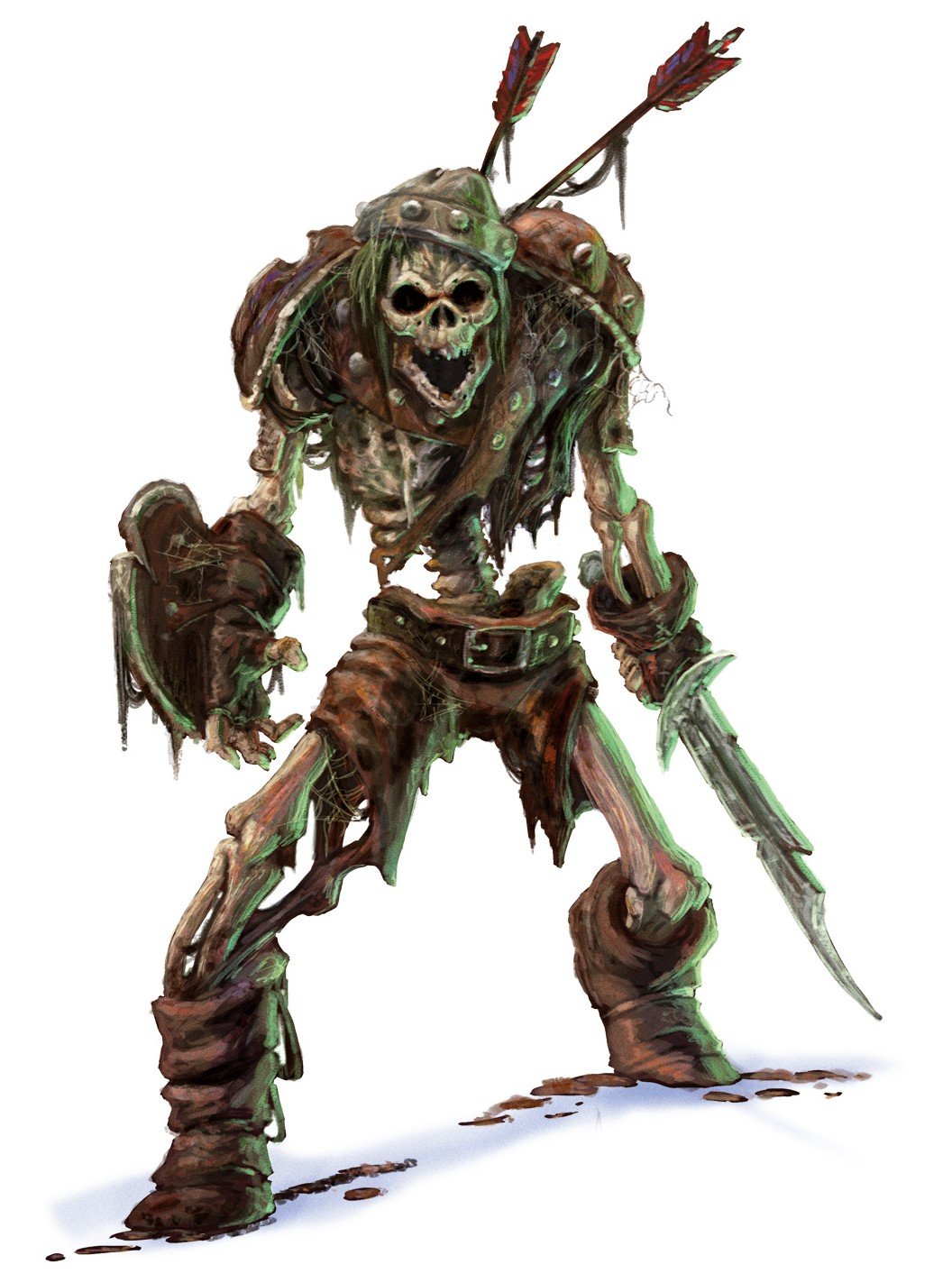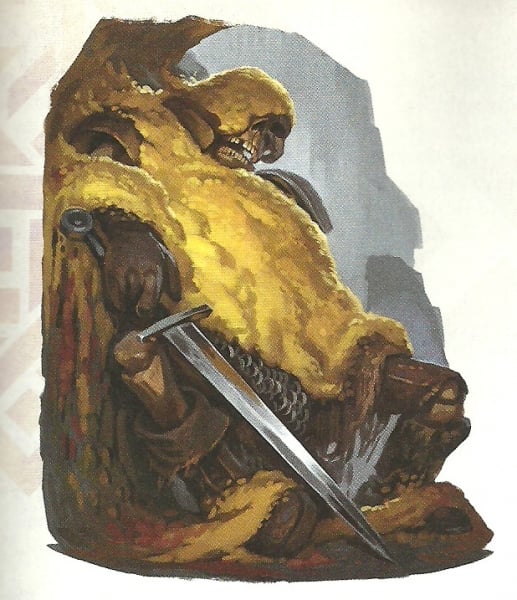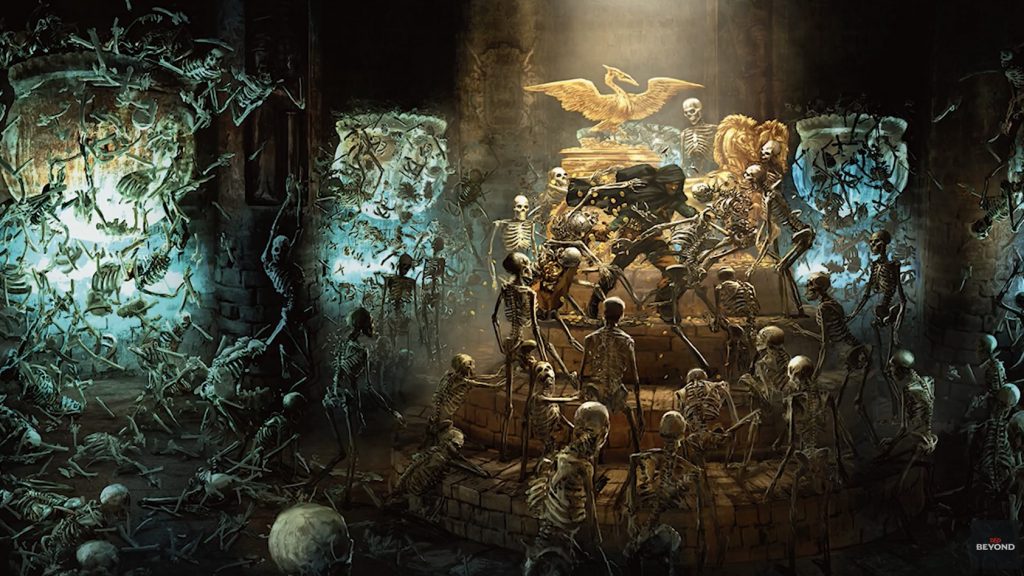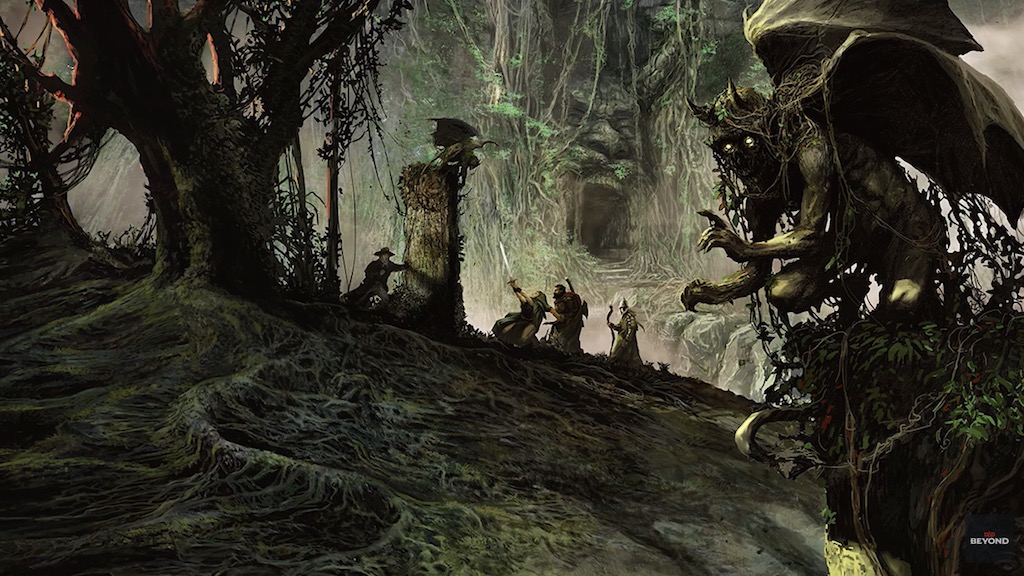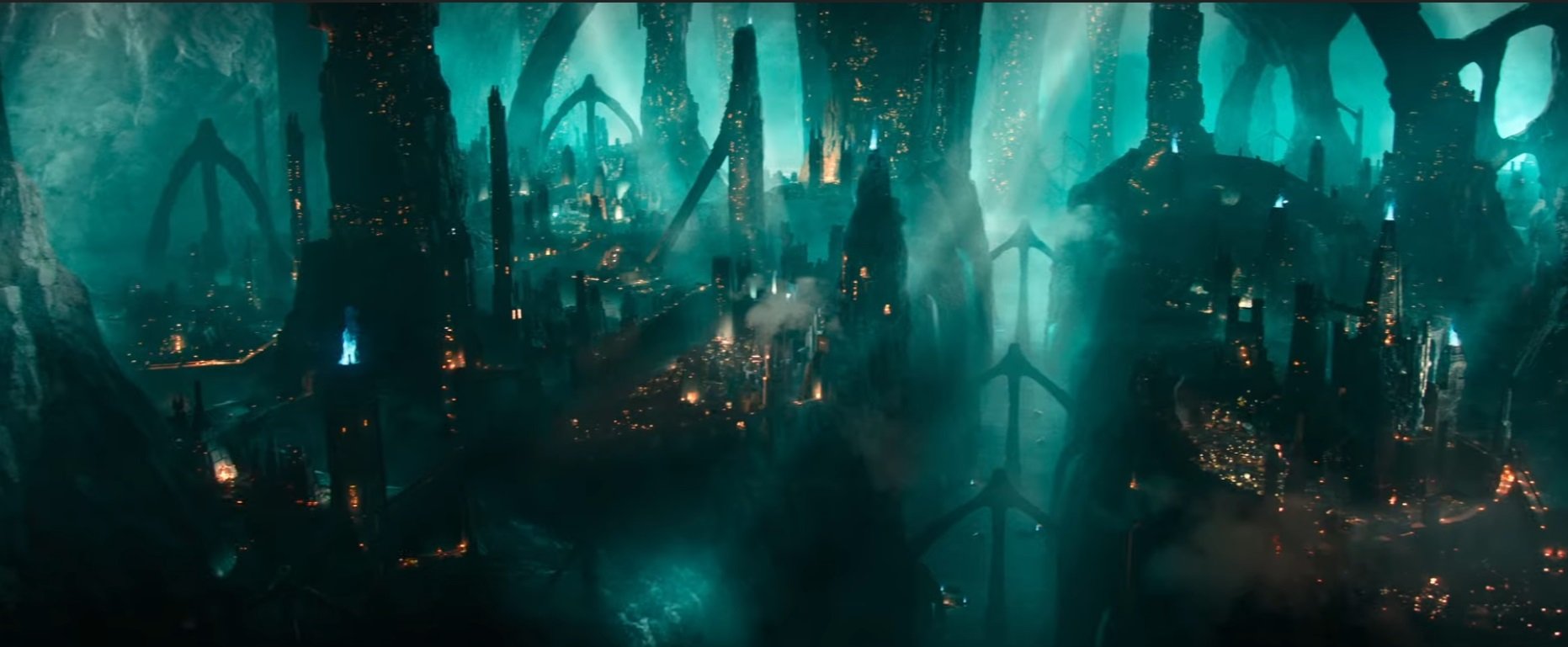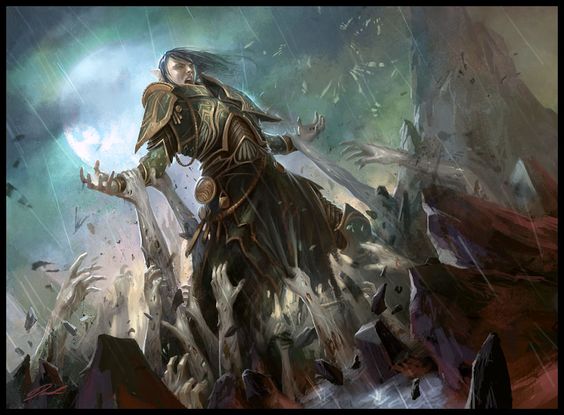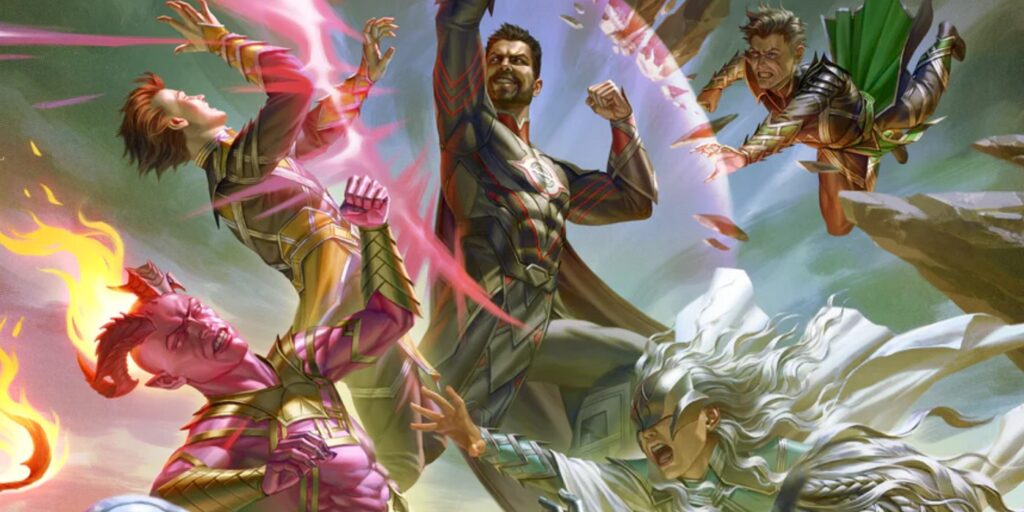Bringing Horror to D&D – A Guide For Your Spookiest One-Shots
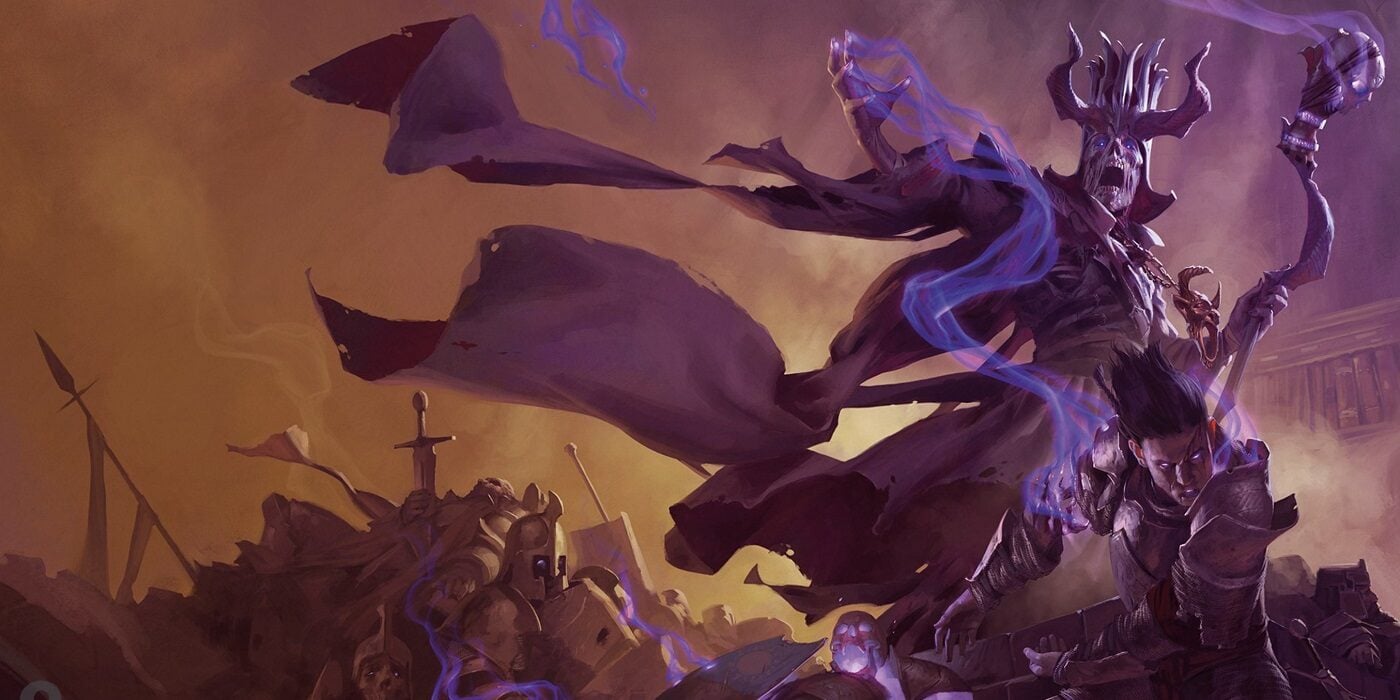
Looking to break out a spooky one-shot this Halloween? Hope to tinge your adventures with dread? Here’s how to bring horror to D&D.
When Halloween rolls in, ghosts and ghouls sprint around the land. Pumpkins grin while Vincent Price and Christopher Lee read spooky poems. And every gamer’s thoughts turn to Halloween spooktacular events. Because horror is in the air. But Horror and D&D don’t always play well together.
After all, D&D is a game all about a power fantasy. You’re playing the heroes who grab the mightiest weapons. Who wield powerful magics to beat enemies. And 5th Edition, in particular, is an iteration of D&D that puts a lot of power in the players’ hands. As a result? It’s a ton of fun. But not the best for horror.
This is because Horror is predicated upon power. Rather, it’s predicated upon the lack of it in its heroes. There’s a reason the characters in horror movies aren’t fearsome warriors. Even Army of Darkness sees its hero as an ordinary man trying his best.
But when your coffers are lined with +1 swords and Magic Missiles, you have to lean on more than just witches and skeletons and ghosts, and skeleton ghosts (the ghosts of skeletons), and ghost skeletons (the skeletons of a ghost) to create “horror”. Done right, horror can really add to a game. But getting it right can be tricky. So make sure all the lights are on, the doors are locked, and the blankets are up around your eyes: let’s talk about how to use horror in D&D.
Now, we’ve talked about horror in gaming before. It’s important to get your players to take risks. You can plan ahead to change the theme of your game to be about a horror narrative. But even if you’re not running a horror campaign, you can still use elements of it to spice up your game. So strap in, and let’s look at some other angles you can take to bring horror to your campaign.
Horror in D&D – Power Dynamics
A big part of horror is that feeling of powerlessness. In a game like D&D where characters have plentiful magic, it can be hard to feel that tension. Look at some of the most iconic horror movies. In Alien there’s no doubt that Ellen Ripley is a powerful hero, but even the weapons aboard the Nostromo aren’t effective against the Xenomorph. The same goes for anyone trying to fight Jason. In Horror, it’s less a question of “how can I deal with these monsters,” but “what do I do now?”
And a big way to do that is to play with what is and isn’t effective. In D&D, many monsters are resistant or immune to certain kinds of damage. In horror movies, the monsters are often immune to what makes the protagonist feel powerful. Zombies are implacable, and even the most grievous of wounds won’t stop them. A headshot will, sure. But it takes more than that to keep a zombie down (in a movie, at least).
Tying vulnerabilities or resistances to the mechanics of the game can convey a threat. Characters that die might be trapped in a magic relic where they can’t be raised. Taking damage from a particular monster reduces your hit points. Clues like this can help telegraph to your players the danger their characters are in. It’s something the players can see coming, and while they may not be ultimately afflicted by these penalties, it adds a little extra drama.
It also affects everyone in the world, which in turn is great because it gives you one of the best tools for helping to set player expectations—for example.
D&D Horror – Lead by Example
The best way to show off that something is horrific is by setting the tone. Let NPCs be scared, even powerful ones. Even if the players don’t buy into the fear, you can set the stage and the tone for the encounter/adventure by letting the players see folks being scared.
By having other characters illustrate “we’re afraid of what’s happening” the GM can show, rather than tell, the worry/fear/mounting dread on the faces of the NPCs. This can take some of the burdens off of the players. It can even help set the stage for them to buy into the horror elements.
If they see other characters who are terrified, it can remind players that sometimes it can be fun to play along. But even if they don’t seem inclined to play along, you can still get the idea of terror out in the world, and the PCs can contrast it with their own actions.
There’s a section in the 4th Edition Underdark guide that talks about how being in the Underdark for long stretches of time without seeing the sunlight or open spaces does things to a person–can start to wear on them.
This is a great chance to use horror to highlight the characters. Toss them in a party traveling on the Underdark for a while, especially if it’s with NPCs they care about, and then let them see the oppressive effects. It can help convey that the PCs are heroic for holding it together or make them feel okay portraying that mounting pressure. For extra measure, have your NPCs straight up ask the heroes how they manage. Let them see your NPCs being “vulnerable” and it can encourage the same thing in your players.
Or better yet, get your players in on the whole scheme.
Invite Players to Own It
There’s an old adage about why you show the monster as little as possible in order to build up tension in the audience. The mind will often come up with something scarier than anything you can provide. And you can use your own players’ minds against them–which sounds messed up, but, bear with me. What I mean is that you can all the players to describe the things that their players should find horrific.
Take a spell-like phantasmal killer, which preys on a character’s worst fear. Invite the player of that character to describe that fear–or at least to hint at it through their reactions. Or if the players are supposed to happen upon a grisly scene, or witness sobering they’d find horrific, just ask for their input. You’d be surprised at how well this works.
I think a big part of it is that out gives the player some agency in the outcome. Because fear/vulnerability can be tied to powerlessness, it can be hard to arrive at those moments. But the truth is, we want those stories. We want those moments where our characters have to struggle and where they authentically feel worried (and the heroic overcoming later on), but we want them on our terms, even if we don’t realize it.
It comes back to control–if you give your players a chance to control the fear/horror element, to engage with it on their terms, you might find them embracing it. After all, it sets the expectation of the player that, hey, let’s be scared together. And so they may try and live up to that. People tend to want to meet expectations when they’re clearly communicated.
And plus, by inviting the player to participate, it helps set the idea that you’re telling the story of the character(s) experiencing whatever fear or horror you’ve set out for them. And even just reframing it like that can get someone on board. It makes them feel like they’re a part of the fun of horror.
Horror can showcase their character in a way we normally wouldn’t get to see. It gives them better ownership of their characters and their campaign. And, ultimately, that’s what you want. That’ll lead to those legendary moments around the table.
So, whether you’re doing a whole horror campaign, or just looking to add some spice to your game, these are some things you can try to help your game go bump in the night.
Fellow DMs, how do you use horror in your games? Fellow players, how do you play those themes? Let us know in the comments!

